 |
||
|
||
| ||
Part 2. Cooler Master, Thermaltake, Evercool and ADDA
Part 1. AVC, Spire and GlacialTech coolersCooler Master DI4-6H52B and DI4-7H53DThe Cooler Master trade mark is well known on the world market and quite popular in Asia and Western Europe. The "retail edition" solutions possess improved quality and advanced technologies but they are dearer as well. Besides, simpler standard products are also interesting and attractive for consumers at least because of a good price/quality ratio. The DI4-6H52B and DI4-7H53D coolers are exactly of this kind.The DI4-6H52B model doesn't have anything extraordinary: it consists of a heatsink measuring 67x67x38 mm and a relatively weak fan of 60x60x15 mm working at 4500 rpm which diminishes its authority as compared with other models. 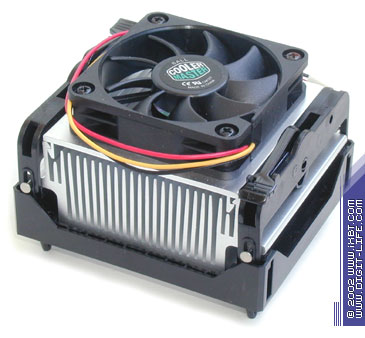 The DI4-7H53D model looks more attractive - it has a full-size heatsink of 83x69x37 mm with good fin parameters (fin is 0.8 mm wide) and an efficient fan of 70x70x15 mm with an impeller rotating at 4000 rpm.  The installation is not difficult, as compared with the DI4-6H52B. The cooler is equipped with handy lever-type clips which provide a standard hold-down pressure (about 15 kg). Apart from the lever each clip has an additional handle (the second holder of the clip which is dynamically fixed) which makes it easier to fix the fastener in the holes of the RM module. As a result, installation/deinstallation of the cooler goes relatively faster and without much difficulty. The DI4-6H52B and DI4-7H53D solutions have a preinstalled Dow Corning SH340 thermal interface (with zinc oxide being the main component) which possesses excellent physical and chemical properties and fairly good effectiveness. Thermaltake A1258 (P4 Dragon 478) and A1254 (Volcano 7+)Thermaltake became an engine of the cooling systems industry several years ago and favored the rapid development of this market. At present Thermaltake products are popular all throughout the world and keep on attracting attention of consumers.However, at the moment Thermaltake looks quite careless in releasing new solutions disregarding their functionality and improvement of performance characteristics. The P4 Dragon model looks promising: it has an advanced heatsink with a copper core (very similar to the AVC Sunflower), an encased powerful fan of 60x60x25 mm, an ordinary lever-type fastener identical to the box version. 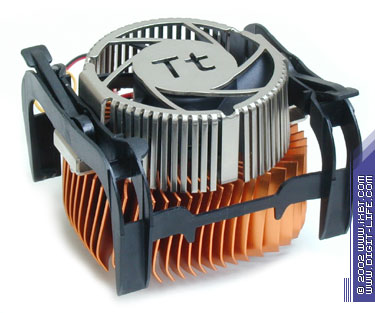 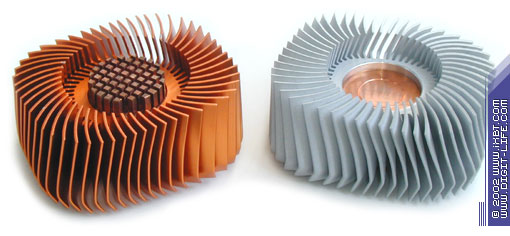 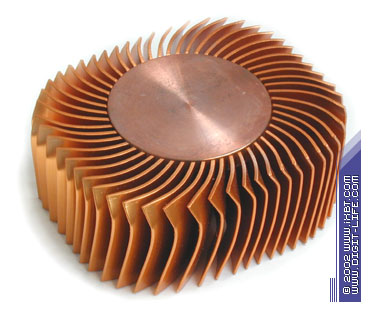 The Volcano 7+ is a unique system suitable both for Socket A and Socket 478 processors thanks to a tricky design and respective components. Another distinguishing feature of the cooler is an advanced copper heatsink with decent fin parameters - it is based on the skived fin technology. 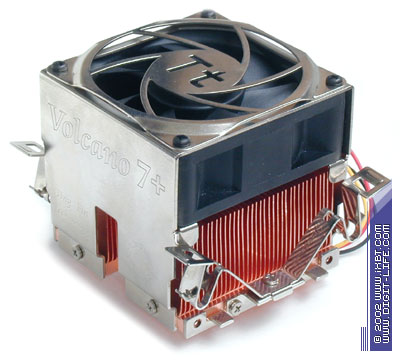 The first one is a complicated procedure of making the cooler operable. To assemble the system (to attach the case with a fan and fasten the cooler) a user needs mechanic skills, tools and muscles. It's necessary to screw in 14(!) bolts 12 of which are to be cut into the heatsink base. Another downside is a loud fan. The powerful fan measuring 70x70x25 mm and rotating at 6000 rpm makes the Volcano 7+ a leader in a noise level. The adjuster coming with the cooler and providing reduced power supply is not an option but a necessity: irrespective of a type and quality of a system unit the fan working at the rated speed doesn't let you take pleasure in your favorite musical composition. A noise level becomes acceptable only at about 4500 rpm, but the thermal efficiency falls down in this case and the Volcano 7+ loses its palm in this aspect. The last disadvantage is a too rigid fastener. You must apply exceptional force, break an RM module of a mainboard when pushing the teeth into the mounting holes of the module. This is because of the terrible mounting brackets of the Volcano 7+ which are very dangerous for the socket and require a very careful treatment. As a result, installation of the Volcano 7+ can be a very difficult problem even for experienced users. So, in spite of good thermal efficiency the Volcano 7+ gets an unsatisfactory mark. It's a pity that such an advanced heatsink with decent fin parameters got such poor fastener and fan. I have no choice but hope that the following Thermaltake's solutions for the Socket 478 will have decent thermal efficiency coupled with respective performance characteristics. Evercool CUW1F-715 and CUW2F-715Evercool Technology has been working on the cooling systems market over 5 years and is a leading OEM partner of several well-known trademarks (for example, Titan Computer). Apart from performing OEM orders the company manufactures a wide line of its own products (mostly processor coolers, cooling systems for hard drives etc.), which have good quality and performance data. Evercool also have cooling systems for Socket 478 among which the CUW1F-715 and CUW2F-715 models are the most interesting for us.The CUW1F-715 cooler has an advanced heatsink of 83x69x38 mm with pin finning, a muted fan of 70x70x15 mm with an impeller rotating at 3500 rpm and an intriguing fastening system which makes a very good impression. 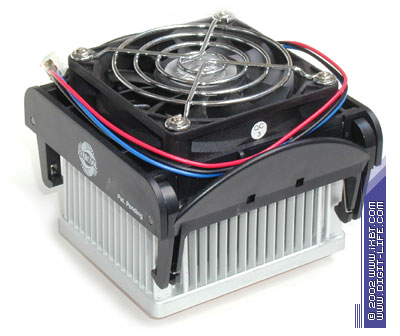  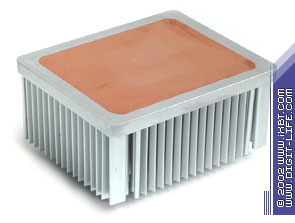 Besides, the CUW1F-715 has a pleasant mounting mechanism. It has advantages similar to the Igloo 4200 and Diamond 4000 from GlacialTech, making installation of the cooler fast and flawless. But there is one downside: the hold-down pressure is just 7 kg which doesn't tell positively upon a thermal contact between the heatsink base and the processor's lid. Probably with a more rigid fastener the CUW1F-715 could show better thermal efficiency (at present the temperature results are average). The CUW2F-715 takes a lot from its predecessor - it has the same pleasant mounting mechanism onboard and the same noiseless fan measuring 70x70x15 mm. At the same time, it demonstrates an advanced copper heatsink of 83x69x37 mm based on the bonded fin technology.  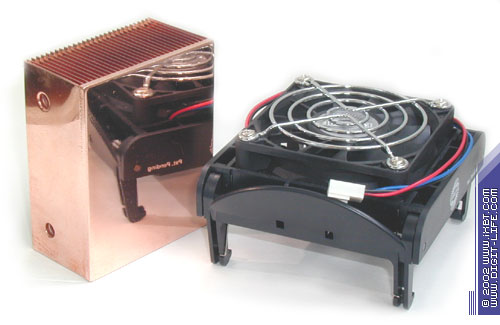 ADDA B66-1AProducts of ADDA Corporation are usually of high quality and have decent performance characteristics. The cooler's results are excellent as well - its thermal efficiency is just a bit worse than that of the reference AVC Sunflower. At the expense of a noiseless fan rotating at 3500 rpm the noise level is quite low. In this parameter the B66-1A comes very close to the GlacialTech Igloo 4200 Light. So, that's all we had to say about the participants and now let's turn to the test results. Note: several coolers (Thermaltake P4 Volcano, Titan TTC-MT4AB, Titan TTC-MS4AB and Titan TTC-W4TB) weren't described above. At present they are gradually leaving the scene being replaced by the newer modifications. But we did include them in the tests because they still can be interesting for you. The temperature results, noise level and other parameters are shown in the "Test Results" and "Table of Ranks" sections. Part 3. Test Results (temperature, noise level, thermal resistance)Part 4. "Table of Ranks" (technical and economic assessment of the coolers and technical and economic ratings)Testing technique. Integrated assessment of consumer qualities of the cooling systems
Vitaly Krinitsin (vit@ixbt.com)
Write a comment below. No registration needed!
|
Platform · Video · Multimedia · Mobile · Other || About us & Privacy policy · Twitter · Facebook Copyright © Byrds Research & Publishing, Ltd., 1997–2011. All rights reserved. |